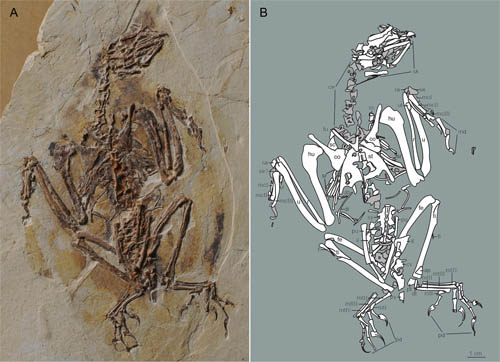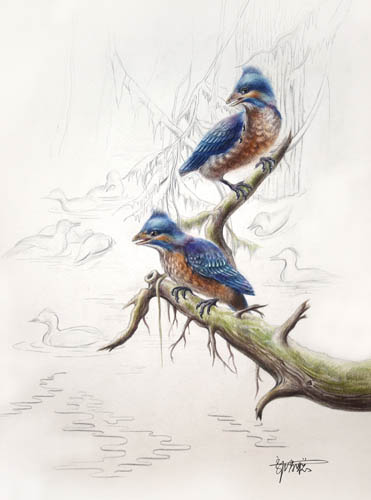Recently, a new bird fossil site was discovered near Sihedang Town, Lingyuan City, Liaoning Province. Initially, it was reported that all the bird fossils produced at this site belong to the same modern bird: Iteravis huchzermeyeri ). The bird fossil origins of the Early Cretaceous are generally dominated by enantiornithine fossil materials, both in terms of quantity and species diversity. Therefore, the Sihedang fossil site is one of the very few found so far that is dominated by modern ornithomorphs. One of the earliest sites for bird fossils from the Early Cretaceous.
Recently, Hu Han and Zou Jingmei from Zhou Zhonghe’s research group at the Institute of Vertebrate Paleontology and Paleoanthropology, Chinese Academy of Sciences, reported the first enantiornith specimen from this site in the British Journal of Systematic Paleontology. And based on this, a new genus and species Monoenantiornis sihedangia was established. The discovery of this enantiornithium provides important evidence for the diversity of birds at the Sihedang site, and also provides important clues to explore the order of composite bone healing of enantiornithes in the Early Cretaceous.
In order to reduce weight and strengthen the bones required for flight, the level of bone healing and degeneration in living birds is much higher than that of other animal groups. In the oldest and most primitive bird, Archaeopteryx, all these composite bones are absent. heal. In basal birds that are slightly more advanced than Archeopteryx, bone healing varies, while the more diverse enantiornithids and anthoornithids simultaneously show a broader trend of bone healing.
The newly discovered Sihedang holotype specimen was in a never-discovered, special and rare ontogenetic stage when it died. Its middle cartilage had ossified but had not yet healed with other proximal tarsals and tibiae, showing that The bone healing pattern is similar to that of members of the order Imornites. In order to explore the composite bone healing sequence of enantiornithes, this study selected published enantiornithine specimens representing different ontogenetic stages, and observed and studied the healing conditions of the five main composite bones and the sternum in these specimens, and concluded that made a preliminary conclusion about the healing sequence of the Early Cretaceous enantiornithine composite bones: most Early Cretaceous enantiornithin specimens can be classified into four main ontogenetic stages: all bones are not healed; sacral vertebrae and pygophyseal bones Healing; tarsal healing; tibiotarsal and carpometacarpal healing.
This research was funded by the 973 Project of the Ministry of Science and Technology and the National Natural Science Foundation of China.

Figure 1 Photos and line drawings of the holotype specimen of Solitarius sihedang (photo provided by Hu Han)

Figure 2 Ecological restoration of the Sihedang Solitary Bird (painted by Guo Xiaocong)
animal tags: birds fossil archaeopteryx
We created this article in conjunction with AI technology, then made sure it was fact-checked and edited by a Animals Top editor.